The Election Project – Simon Roberts
EXHIBITION REVIEW: The Election Project – Simon Roberts
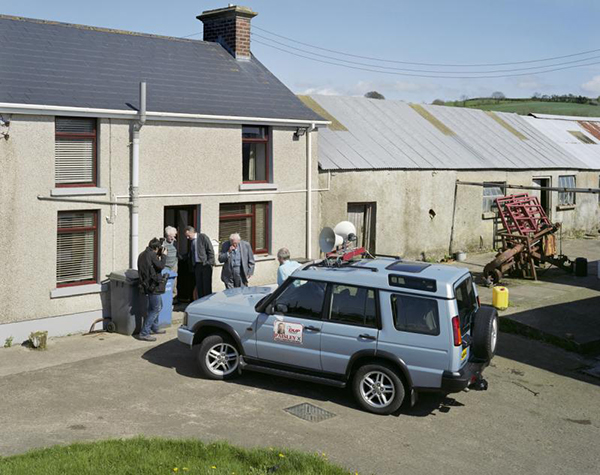
We have a tendency to look back on events from an elevated perspective – hindsight does, somehow, give our memories a lofty vantage point; a mental image that may not be physically accurate, but affords a detached, unobstructed panorama of what has unfolded. In real-time the truth is obfuscated by events, and it is only when the dust of events has settled that we are given a more objective summary of what has passed.
Given this premise, and considering his recent acclaimed body of work, We English, it is no surprise that Simon Roberts was approached by The Speaker’s Advisory Committee on Works of Art, and invited to submit a proposal to win the commission of Official Election Artist for the 2010 General Election. Roberts followed the two previous incumbents, Jonathan Yeo who painted portraits of the three party leaders in 2001, and David Godbold who made a series of illustrations in 2005.
We English, was an examination of the English at rest within their landscape, and drew on the principle of detached elevation to achieve its ends. But while the place of people within the landscape was central to the work, personality was not. It was the fact of people, rather than the people themselves, that created the context and told the story so effectively. But a commission to document the general election presented a problem: how to continue to work in the same vein, but make room for personality, something so central to modern elections?
Emma Gormley, the Assistant Curator at the Houses of Parliament said that Roberts was an obvious choice for the post, not simply because he is a good photographer, but rather because his enthusiasm and interest in the subject were so clear. They were struck from the first meeting by the sheer breadth of Simon’s understanding of British politics and its landscape. And there was no doubt that he could manage the logistics of such an undertaking.
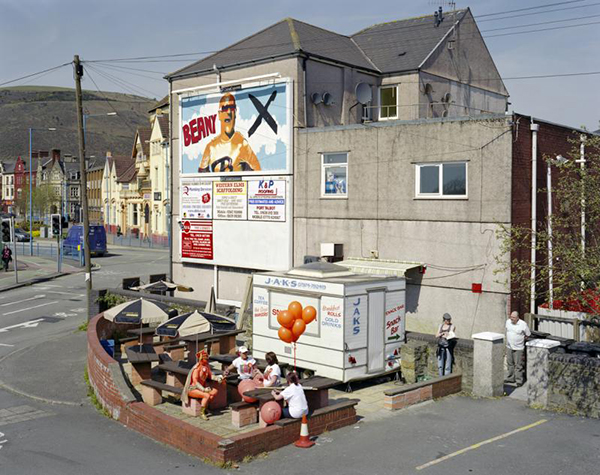
More importantly though, Roberts is an assiduous researcher who knows better than most that the secret to telling a story is understanding the detail intuitively. Roberts “gets” democracy, and in particular he gets the peculiarities of British parliamentary democracy. This is not the grand set piece theatre of US presidential elections, but it is theatre nonetheless: the theatre of amateurs. That is not to denigrate it, or to disparage those who hold or seek to hold the office of MP. Rather it is a statement of fact, and it is one of those truths that make the British system so endearing, so utterly democratic and to many so utterly chaotic and frustrating. While other systems require patronage or money, our system of representation is egalitarian: whether you are the sitting Prime Minister in Downing Street, or an over-tangoed Captain Beanie in Port Talbot, the hurdles to stand for election are the same. Roberts’ innate understanding of this was in no small part responsible for his gaining the commission, as was his desire to build on the experience of public participation from We English by encouraging people to send in their own photographs depicting the election.
Roberts’ approach was to use the technique that had served him so well for We English, but to come in just a little closer, just enough to allow the personality to form a part of the image without overpowering it. To work, the balance had to be perfect, as the images need to play to two audiences: the contemporary audience, and the audience of tomorrow: those for whom the names Brown, Cameron and Clegg will be vague historical footnotes. That audience will be concerned more with what Britain was, and what it became as a result of the election, than with the characters themselves. Indeed, although the three party leaders made the final edit, most of the rest of the candidates depicted are unfamiliar to the average voter even today. If the pictures had allowed personality to become overbearing their resonance as historical documents would have been diluted. Would that have mattered? In short, yes. This commission was about creating art not for its own sake, but for its capacity to inform, educate and entertain future generations of Britains. It is now, and was always meant to be part of the historical record. As it turns out, if Mr Clegg gets his way, Roberts’ work may come to define the last election to use the only system we have ever known until now. If for no other reason it will inevitably be of great interest to commentators and public alike in a future we cannot even imagine.
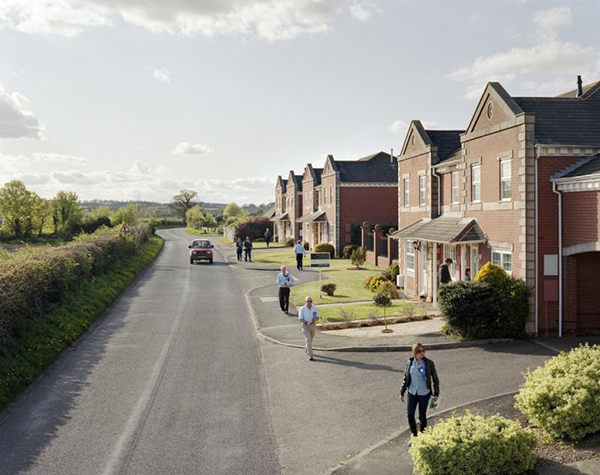
Roberts said at the outset that he wanted to demonstrate just how mundane and lonely canvassing for votes could be, and it was equally important for him that the finished work reflect the full range of political views that exist in Britain today, so he paid as much attention to the independents and smaller parties as he did to the three heavyweights.
But the beauty of the work is in how much it tells us about the Britain of 2010. On the one hand there are the tower blocks, the boarded up terraces in the shadow of a football stadium, the caravans and post war housing, the modern executive homes trying to blend into rural England. On the other we have Woolworths – a metaphor for an election fought on the back of the deepest recession in living memory – and the market stalls of Whitechapel, the everyman trying to maintain his livelihood.
And the everyman is what British elections are all about. Each candidate has to appeal to the everyman. It is the grind of pressing the flesh, pounding the streets, knocking on doors, handing out leaflets, listening to the concerns of everyman that make the election such a hard and frequently thankless slog for the candidates, a fact captured with eloquence and irony in each image. The electioneering process is the same irrespective of the set in which it is played, and makes clear that while between the polls we the public must do the bidding of our political masters, the theatre of election is that moment when the tables are turned, and the politicians must come to us cap in hand, and beg for a chance, or another chance as the case may be. With the scandal of expenses so fresh, many of the candidates cut a lonely dash.
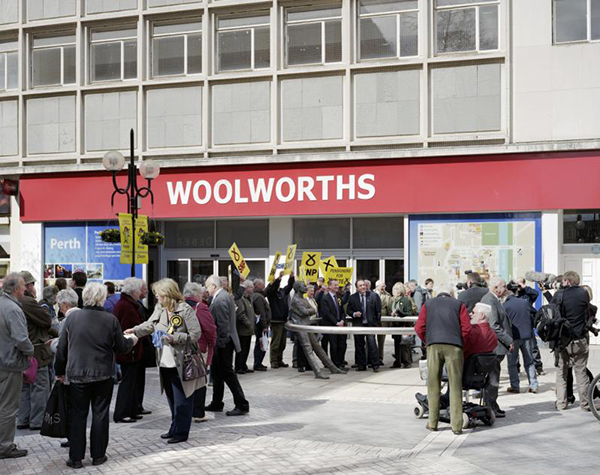
As with We English, The Election Project was shot on film on a 5”x4” sheet film camera, with every detail precise and ready for the viewer’s inspection. All the images can be seen on the website, or indeed in the wonderfully ephemeral limited edition newspaper-as-catalogue designed by FUEL (the same people who have designed both Motherland and We English – and the essence of brand continuity is clear to see). But the only way to truely appreciate these photographs is as they are intended to be seen: glorious 120x90cm prints, full of detail and subtlety that draw you in with the many, many layers that exist within them.
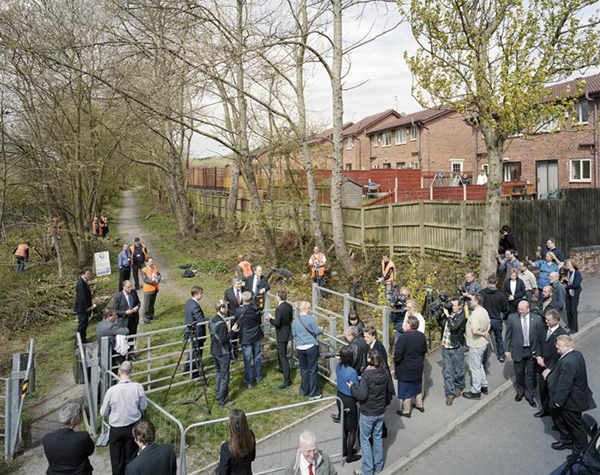
There are elements that are poignant and serious, but there are just as many that are funny, and ironic. Gordon Brown facing the press with the now famous Gillian Duffy watching on – behind the Prime Minister (displaying what must be the last genuine smile he gave on the election trail) a man oversees prisoners working in the community, his fluorescent tabard says “Probation Supervisor”, while a signboard announces “offenders working for the community”. Or there is the juxtaposition of Ian Paisley Sr and two megaphones, and all the redolence of the voice of Unionism from a time gone by.
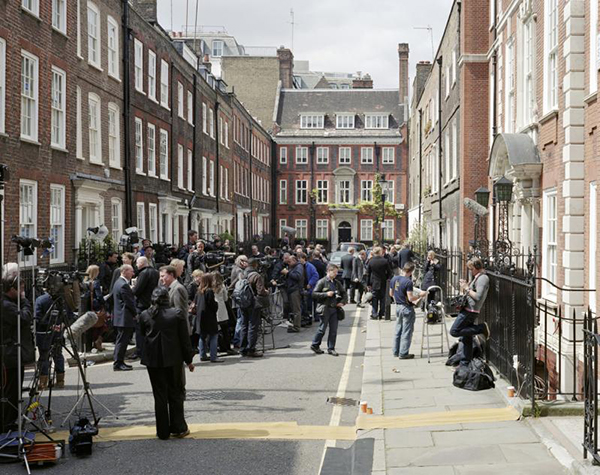
Perhaps my favourite, though, is from the extra image – the one that Simon made to reflect the no man’s land of the coalition talks. Outside the Liberal Democrat HQ the massed ranks of the press wait for news. By the door a cameraman stands by his equipment. On the back of his T-shirt it reads: “It could happen at any time”. Never a truer word said, and that is what The Election Project is all about. Don’t miss it.
All images © Simon Roberts 2010The first opportunity to view the exhibition will be this Saturday and Sunday (18th-19th Sept) during the Open House Weekend when Portcullis House will be open from 10am-5pm (last entry: 4.30pm). Enter via the building’s main entrance on Victoria Embankment. As well as the 25 prints created by Simon, there is a fifteen metre installation showing all of the 1696 images submitted online by the general public, many of which offer a wry, surreal or acerbic commentary on the election, and are well worth closer inspection. 3000 copies of the FUEL designed newspaper are available free to those quick enough to get them.
For those unable to make the exhibition then, public access to the exhibition is by free guided tours offered on a first come first serve basis. You can find out more details here.


Leave a Reply